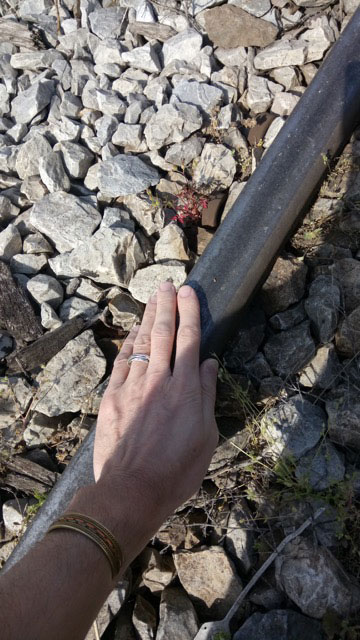A human hand on a rail.

A human hand on a rail: like a symbolic act of commemoration? What I learnt from running our first Holocaust tour to Salonika in April last year was how like a pilgrimage this was for many of our educator participants. It was from the old railway station that the first train and its cattle-trucks of Jewish ‘cargo’ began to roll towards Auschwitz on the 15th March 1943. Within a few months almost the entirety of a 50,000 strong community passed through this terminus towards their destruction.
Traces of a Spanish speaking Jewry – for more than 400 years the dominant element in this great Aegean port-city – are hard to find now unless one knows where to search. No wonder our group found the fragments of Jewish tombstones heaped up in haphazard piles but otherwise out of sight in the backyard of Agios Demetrios, the ancient church of Salonika’s great patron saint, so arresting. Those tombstones tell a further dark story of local complicity in the Jewish fate as well as of cupidity and ambition. Today the Aristotle University of Thessaloniki – arguably the premier university in the entire Balkans – stands on the site of the once huge Jewish cemetery from which those tombstones had been untimely wrenched – or smashed – in late 1942. Most of today’s students there have little awareness or empathy for what this all means. But for our group the realisation was an intense one. Pilgrimages very often involve journeys to a place of death but more often than not to celebrate a life or lives lived. I had not anticipated that our study-tour would be thus.
